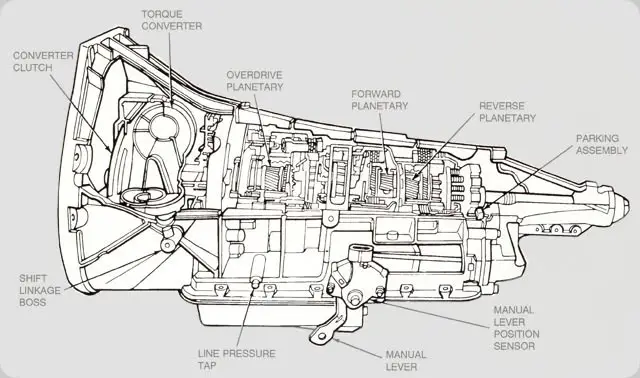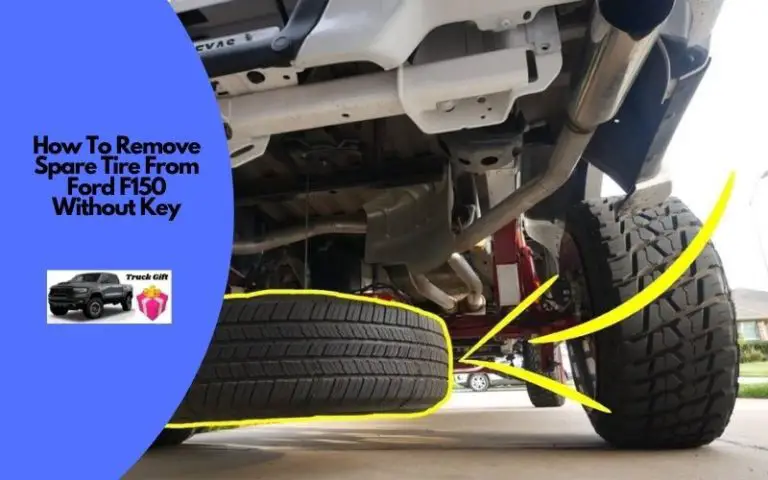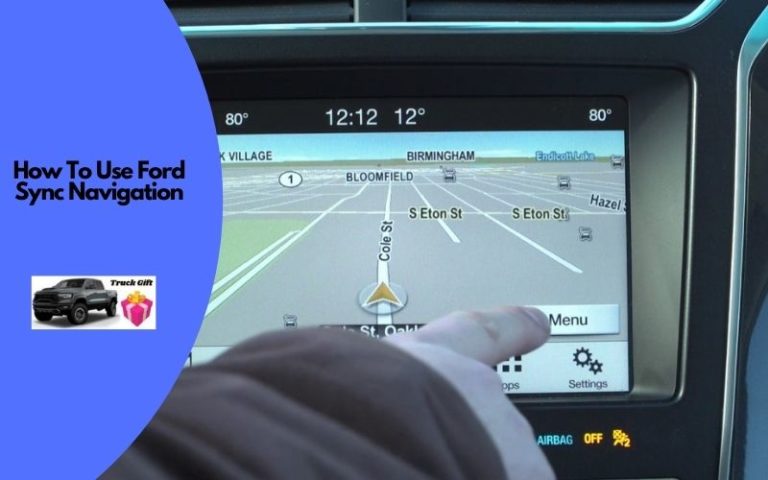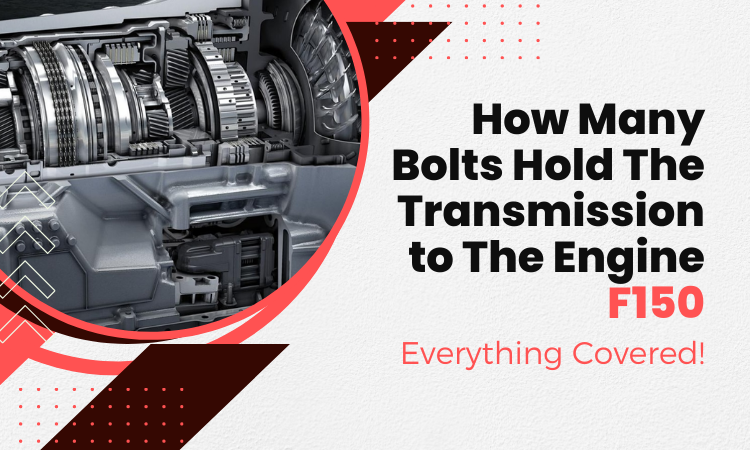7 Reasons & Solutions Ford F150 Transmission Will Not Engage?
Ford F150s are powerful and reliable vehicles. As dependable as a vehicle may be, it is still possible for it to suffer some problems from time to time. One common issue that Ford F150 owners may encounter is a transmission that will not engage.
So, why your Ford F150 transmission will not engage?
Ford F150 won’t engage due to low transmission fluid, a clogged transmission fluid filter, a faulty shift solenoid, or a worn clutch. Rarely, a faulty transmission control module, a wiring problem, or a damaged gear or bearing can also be a cause. Properly diagnose the issues and repair or replace the faulty parts as required.
Let’s take a look at the causes and solutions for a Ford F150 transmission that will not engage.
Ford F150 Transmission Will Not Engage: Primary Diagnosis
To diagnose the issue with the Ford F150 transmission not engaging, several steps need to be taken.
The first step is to check the shifter linkage, as a malfunctioning linkage can prevent the transmission from engaging. Look for strange grinding noises when attempting to engage the transmission.
Ensure that the control harness is fully plugged in, as a partially plugged harness can set codes and light up the shifter lamp.
Lastly, check if fluid is pumped out of the trans output cooler line when it is disconnected. It indicates an issue with the front pump of the transmission. If no fluid is pumped, it could be because the torque converter is not fully engaged.
7 Reasons & Solutions Why Ford F150 Transmission Will Not Engage
Several reasons can result in the Ford F150 transmission not engaging.
| Reason | Other Symptoms | Solution |
| Low transmission fluid levels | Slipping gears, noisy transmission, delayed shifting, warning lights, burning smell, unusual behavior on gears | Repair leaks or refill transmission fluid |
| Clogged transmission fluid filter | Delayed shifting or slipping gears, warning lights on the dashboard, unusual noises from the transmission, reduced fuel efficiency, jerky or rough gear shifting | Replace the fluid filter |
| Faulty shift solenoid | Delayed shifting or slipping gears, unusual noises from the transmission and the engine, transmission is unable to downshift | Replace the faulty solenoid |
| Worn clutch | Spongy or unresponsive clutch when pressed, difficulty accelerating, engine stalling | Replace the worn out clutch |
| Faulty transmission control module | Check engine light,error codes, poor shifting, delayed engagement, transmission slipping, overheating, limp mode | Reset, reprogram or replace TCM |
| Wiring problem | Check engine light on, error messages, loss of power or stalling, noises coming from the transmission area | Replace the faulty wires. |
| Broken gear or bearing | Check engine light, error codes, grinding or whining noise, delayed engagement, slipping out of gear, loss of power, reduced acceleration,leaking transmission fluid | Replace the gear or bearing |
Reason One: Low Transmission Fluid Levels
Low transmission fluid levels in a Ford F150 can be caused by a variety of factors, including leaks, worn transmission seals, and a lack of regular maintenance. Low fluid can also cause the faulty brake system in Ford 150.
Symptoms:
Other than the Ford F150 transmission not engaging, you may notice the following symptoms-
- Slipping gears
- Noisy transmission
- Delayed shifting
- Warning lights
- Burning smell
- Unusual behavior on gears
Diagnosis:
Inspect the transmission and its surrounding components for damage or leaks. The transmission is located under the vehicle, near the rear axle.
Here is the process for checking the transmission fluid level-
- Run the engine and keep the vehicle on level ground.
- The transmission dipstick location is the engine or transmission. Use a rag or a paper towel to wipe it clean.
- Insert the dipstick fully once and pull it out again to check the fluid level. The level of fluid in the dipstick should be between the “Full” and “Add” marks.
Solution:
Add transmission fluid as required if the fluid level is low. F150 has specific transmission fluid based on its make and model. Reinsert the dipstick and check if it’s at the correct level as mentioned above.
If there is a leak in any transmission components, use a sealant or gasket to repair the leak.

Reason Two: Clogged Transmission Fluid Filter
A clogged transmission fluid filter will block the transmission from working properly, resulting in the transmission to not engage.
The transmission fluid filter removes the contaminants and debris from the transmission fluid. As a result, the transmission will run smoothly.
Symptoms:
If your transmission fluid filter is clogged, prior to the transmission not engaging you may notice the symptoms below-
- Delayed shifting or slipping gears
- Warning lights on the dashboard
- Unusual noises from the transmission
- Reduced fuel efficiency
- Jerky or rough gear shifting
Diagnosis & Solution:
To locate the transmission fluid filter, you first need to drain the fluid and remove the transmission pan. For an amateur truck owner, the whole process may take a while as the process is quite difficult.
So, here is a video with the complete process of checking and replacing the transmission fluid filter on a Ford F150.
Transmission fluid filters are quite cheap, around $8. But if you go to a mechanic, it will cost more because they will charge you for the labor.
Reason Three: Faulty Shift Solenoid
The shift solenoid is a component of the transmission that controls the movement of gears and is responsible for shifting the transmission into the appropriate gear.
Symptoms:
- Delayed shifting or slipping gears
- Unusual noises from the transmission and the engine
- Transmission is unable to downshift
Diagnosis:
The usual method of diagnosing a shift solenoid is to look for OBD-II codes. Several OBD-II codes point to a faulty shift solenoid, like P0750, P0755, P0760, P0765, P1860, and P2701.
Also, you can check the solenoid with a multimeter for confirmation. Here is how-
- Locate the shift solenoids which are close to each other near the transmission.
- Set the multimeter to the DC voltage setting and connect the leads to the solenoid’s electrical connector.
- Keep the engine running and put the transmission in Park.
- Check the voltage reading on the multimeter. The manual should specify the range for that gear.
- Now, check the reading when shifting the transmission through each gear. There will be different voltages with gear changes. The voltage should change as the transmission shifts into different gears.
- Compare the voltage readings to the specified values in the vehicle service manual. If the readings are not within the specified range, the solenoid is likely malfunctioning.

Solution:
A faulty shift solenoid will have to be replaced. The process starts with disconnecting the battery and disabling the electrical system of the truck. Locate and replace the shift solenoid with a new one.
Here is a video simply explaining the whole process-
If the process is too complicated, you can take your truck to a mechanic, which may cost you around $200-$300 for this specific problem.
Reason Four: Worn Clutch
If your Ford F150’s clutch is worn, inspect and replace it as soon as possible to avoid further damage to your transmission.
Symptoms:
- Clutch may feel spongy or unresponsive when pressed
- Difficulty accelerating
- Engine stalling
Diagnosis & Solution:
Checking a worn-out clutch requires accessing it first. To access-
- Disconnect the battery before starting any work on the vehicle to prevent electrical short circuits.
- Ensure that the transmission fluid has been drained before removing the transmission.
- Remove the drive shaft that connects the transmission to the rear wheels before removing the transmission from the vehicle.
- Remove the transmission by unbolting it from the vehicle.
- Inspect the clutch for any signs of wear or damage once the transmission is removed.
Replace if the clutch is damaged or worn. This process may be too complicated for you, so contact a mechanic who will do the work for you. You can expect a total cost of around $700 to $1,000 for the job.
Or, if you insist, here is a video of the process-
Reason Five: Faulty Transmission Control Module
A faulty Transmission Control Module (TCM) can cause the transmission to not engage. It controls the transmission and its various functions. In some cases, the TCM may be reprogrammed instead of replaced. So, it’s very important to diagnose it thoroughly.
Symptoms:
- Check engine light
- Error codes
- Poor shifting
- Delayed engagement
- Transmission slipping
- Overheating
- Limp mode
Diagnosis:
There are several OBD-II codes may indicate an issue with the TCM (transmission control module). For example- P0700, P0701, P0702, P0703, P0704, P0705, P0706, P0707, P0708.
If you find these codes in your OBD-II scanner, you should consult with a mechanic for a thorough diagnosis. Also, the fuse in the TCM may be blown; look at the owner’s manual to identify the fuse and check it with a multimeter for continuity.
Solution:
Depending on the problem with the TCM, the mechanic may reset, reprogram, or replace the TCM. If the fuse is blown, replace the fuse. You may expect a labor cost of around $300.
Reason Six: Wiring Problem
A wiring problem could potentially cause issues with the transmission not engaging on a Ford F-150. A sensor or electrical component in the transmission system may not be receiving the proper signals or power due to a wiring issue.
A wiring issue can trigger many other problems that may be hard to detect, such as the AC working intermittently.
Symptoms:
- Check engine light on
- OBD-II error messages related to the transmission system
- Loss of power or stalling when attempting to accelerate
- Noises coming from the transmission area
Diagnosis:
To look for any wiring issues, you will have to look for frayed, broken, or damaged wires. To be more precise, you need to check the following wirings-
- The power and ground wires for the transmission control module (TCM)
- The sensor signal wires for the transmission input and output speed sensors
- The solenoid control wires for the transmission solenoids
- The wires for the transmission range sensor
- The wires for the neutral safety switch
- The wires for the park/neutral position switch
Refer to the wiring diagram of your Ford F150’s specific make and model, as the wiring location may differ based on this.
You can perform a voltage, resistance, or continuity test with a multimeter to make sure they are working. Refer to the owner’s manual for the recommended value for these wires.
If you are unfamiliar with the electrical systems of cars, locating and repairing wiring problems can be complicated and dangerous. It’s best to have the vehicle inspected by a qualified mechanic or Ford dealer to diagnose and repair the issue.
Solution:
A non-functional wire must be replaced. Here is a simplified version of the replacement process-
- Disconnect the wire: Use a socket set or pliers to remove any fasteners holding the wire in place, and then gently pull the wire out of its connector.
- Measure and cut the new wire: Measure the length of the old wire and cut a new wire to the same length. Make sure that the new wire is the appropriate gauge and type for the application.
- Strip the wire: Use wire strippers to remove a small section of insulation from the end of the new wire.
- Connect the new wire: Insert the stripped end of the new wire into the connector, and secure it in place with any fasteners that were removed earlier.
- Test the connection: Use a multimeter to test for continuity, voltage, or resistance in the new wire to ensure that it is working properly.
- Reassemble the vehicle: Replace any panels, covers, or other components that were removed earlier to gain access to the wire.
Reason Seven: Broken Gear Or Bearing
If the transmission in a Ford F150 is not engaging, it could be due to damage to the gears or bearings. This could be caused by a variety of factors, such as wear and tear over time, a lack of proper maintenance, or exposure to harsh driving conditions.
Symptoms:
- Check engine light on and/or error codes
- Grinding or whining noise while shifting gears
- Delayed engagement when shifting into gear
- Slipping out of gear while driving
- Loss of power or reduced acceleration
- Leaking transmission fluid
Diagnosis & Solution:
Diagnosing damaged gears or bearings can be a difficult and tedious task. So, it’s best to get help from a professional and experienced mechanic. The mechanic will look for worn-out gears or bearings and replace them if necessary.
The whole replacement process may cost you around $200, depending on your area.
Ford F150 Transmission System Maintenance
To keep your Ford F150’s transmission in shape, make sure you follow these tips-
- Check fluid levels regularly and add as necessary.
- Replace the transmission fluid and filter every 30,000 miles or as recommended by the manufacturer.
- Inspect the transmission for leaks or damage.
- Keep an eye on transmission temperature and address any overheating issues immediately.
- Have the transmission system serviced and inspected by a professional mechanic as needed.
- Avoid towing heavy loads or using the vehicle for extreme off-roading activities.
- Avoid shifting gears too quickly or harshly to prolong the life of the transmission.
Frequently Asked Questions (FAQs):
Why won’t my truck move when I put it in gear?
If your truck doesn’t move when you put it in gear, it’s more likely due to a low transmission fluid level or a leak in the fluid tank. Also, it may be because of a malfunctioning shifter or shifter cable, or even the valve body of your automatic transmission may be faulty.
What happens when an F150 goes into limp mode?
During limp mode, the Ford F150’s computer indicates a problem with its transmission or other drivetrain components. This mode reduces transmission power to protect the engine and transmission from further damage, causing the vehicle to only move in low gear, or even not move at all. The check engine light may also illuminate.
What is the most common cause of transmission failure?
A low level of transmission fluid is one of the biggest causes of transmission failures. Low levels of fluid prevent the transmission from operating properly, leading to overheating. A high fluid level can cause the transmission to shift harshly and slip, causing a delay in engagement. Overheating can damage gears, bearings, and seals.
Conclusion
When your Ford F150 transmission will not engage, it can be a frustrating and potentially costly problem. It can, however, be resolved with the right knowledge and approach.
Understanding the causes and potential solutions for this issue can help you make informed decisions about the repair and maintenance of your vehicle. It’s important to consult a professional mechanic for proper diagnosis and repair if the solutions confuse you.
Also, regularly checking the transmission fluid level, and keeping your vehicle in good condition can also help prevent this issue from occurring in the future.






![How To Play Video On Ford Sync 3? [3 Easy Steps To Follow]](https://truckguidepro.com/wp-content/uploads/2021/08/How-To-Play-Video-On-Ford-Sync-3-768x480.jpg)
